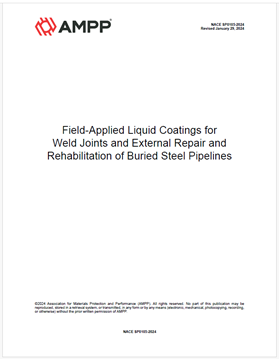Search
Products tagged with 'joints'
View as
Sort by
Display
per page
51318-11064-Application of Indirect Condition Assessment Techniques for Buried Water Pipelines: A Case Study
Product Number:
51318-11064-SG
Publication Date:
2018
$20.00
NACE SP0105-2024, Field-Applied Liquid Coatings for Weld Joints and External Repair and Rehabilitation of Buried Steel Pipelines
Product Number:
NACE SP0105-2024
Publication Date:
2024
$109.00



